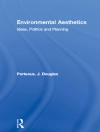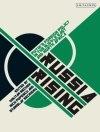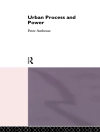In undertaking a systematic analysis of urban materiality, this book investigates one kind of material in Melbourne: stone. The work draws on a range of pertinent, current theories that consider materiality, assemblages, networks, phenomenology, resource and extraction geographies, memorialisation, maintenance and repair, place identity, skill, sensation and affect, haunting and the vitalism of the non-human. In appealing to the general reader, academics and students, this book provides a highly readable account, replete with evocative examples and fascinating historical and contemporary stories about stone in Melbourne.
Tabla de materias
Cliff.- Chapter 1: Thinking about Urban Materiality.- Tomb.- Chapter 2: Stony Flows.- Quartz.- Chapter 3: Stony Entanglements: Quarrying, Demolition, Disposal and Remediation.- Foundation.- Chapter 4: The Maintenance and Repair of Stone Assemblages.- Tree.- Chapter 5: Remembering with Stone.- Grotto.- Chapter 6: Sensing Place: Living with Melbourne’s Stone.- Garden.- Chapter 7: Becoming Attuned to Stone: Skill, Craft, Making.- Temple.- Chapter 8: The Ghosts of Urban Stone.- Scholar Stone.
Sobre el autor
Tim Edensor is Professor of Human Geography at Manchester Metropolitan University and a Principal Research Fellow in Geography at Melbourne University. He is the author of
Tourists at the Taj (1998),
National Identity, Popular Culture and Everyday Life (2002)
Industrial Ruins: Space, Aesthetics and Materiality (2005) and
From Light to Dark: Daylight, Illumination and Gloom (2017). He is the editor of
Geographies of Rhythm (2010) and co-editor of
The Routledge Handbook of Place (2020),
Rethinking Darkness: Cultures, Histories, Practices (2020) and
Geographies of Weather (2020).












